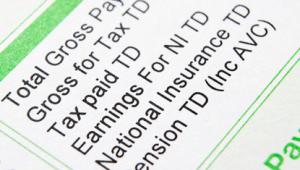In an analysis of the impact the new rate will have on different sectors of the economy, the think-tank found the public sector would be among the least affected.
The total wage bill increase in the economy is expected to be £1.5bn, or 0.2% of the overall total, when the rate is introduced for those aged 25 and over at £7.20 from next April, rising to £4.5bn (0.6%) in 2020.
Overall there will only be a 0.2% rise in the public sector pay bill by 2020, compared to 0.8% for the private sector by the end of the decade.
Small businesses of less than ten employees face the biggest increase in their wage bill to 2020, a 1.5% rise, while that for large employers (between 250-4999 employees) will rise by 0.6%.
Although the overall increase in the public sector wage bill is small, it could prove challenging to implement given the 1% cap on annual increases in the wage bill across the public sector for the next four years, the foundation said.
There is a particular risk to councils, the report stated, where around one in five workers are expected to receive a pay rise. Fewer than one in ten central government employees will be affected.
Policy analyst Conor D’Arcy said the NLW would give a wage boost to six million workers.
However, the expected rises will take the wage floor into uncharted territory. “Having announced the new National Living Wage as a Summer Budget surprise, the government must now set out a detailed plan for implementation,” he added.
The report stated that the money to meet the added cost of the NLW in the public sector would need to be found from Treasury funding for the 1% increase.
“Given this pay restraint, it may mean that spillover effects are less common or smaller in the public sector than elsewhere, as well as those earning above the NLW being generally likely to see lower pay growth in coming years,” it stated.
“The consequences of the chancellor’s pay cap for services and recruitment within the public sector were set to be a challenge in any case over this parliament, but the introduction of the NLW makes it all the more pressing.
“Local authorities, in which 20% of employees are likely to see some wage boost, will find this more challenging than central government … given the added squeeze under which local government funding has been placed under recent years.”
In addition, the think-tank called on the government to find significant additional resources in the upcoming Spending Review to fund the wage rate in social care.
Previous RF research found the higher wage floor meant that the sector will require £1.3bn of additional public investment by 2020, although half of this will be returned to the Treasury through higher tax receipts and lower welfare payments.




















